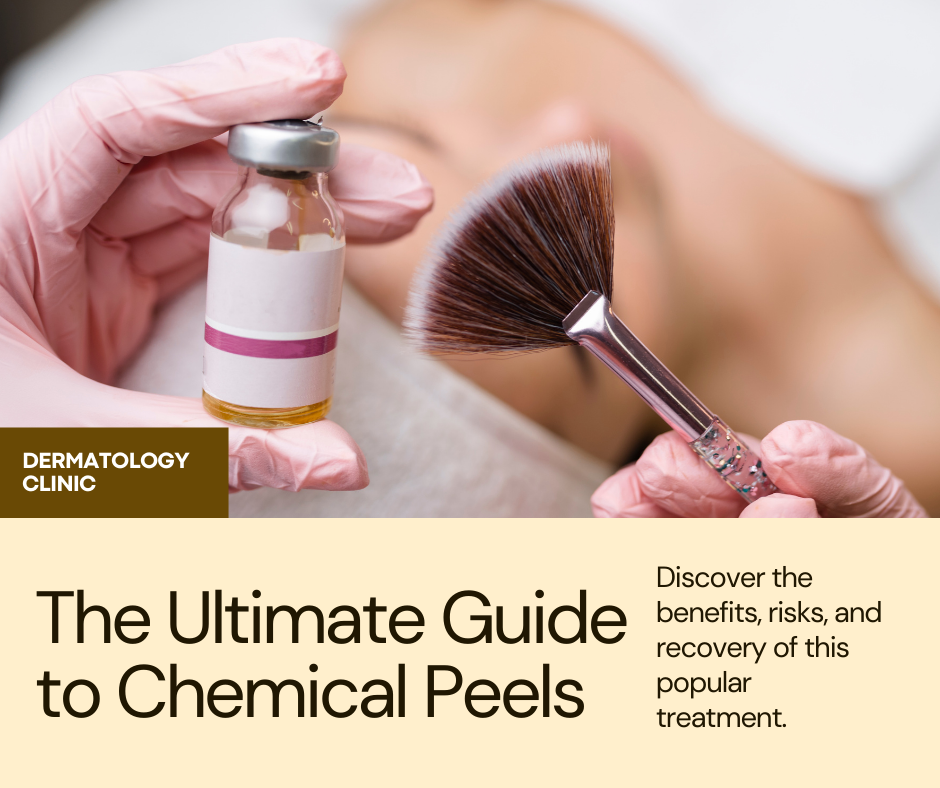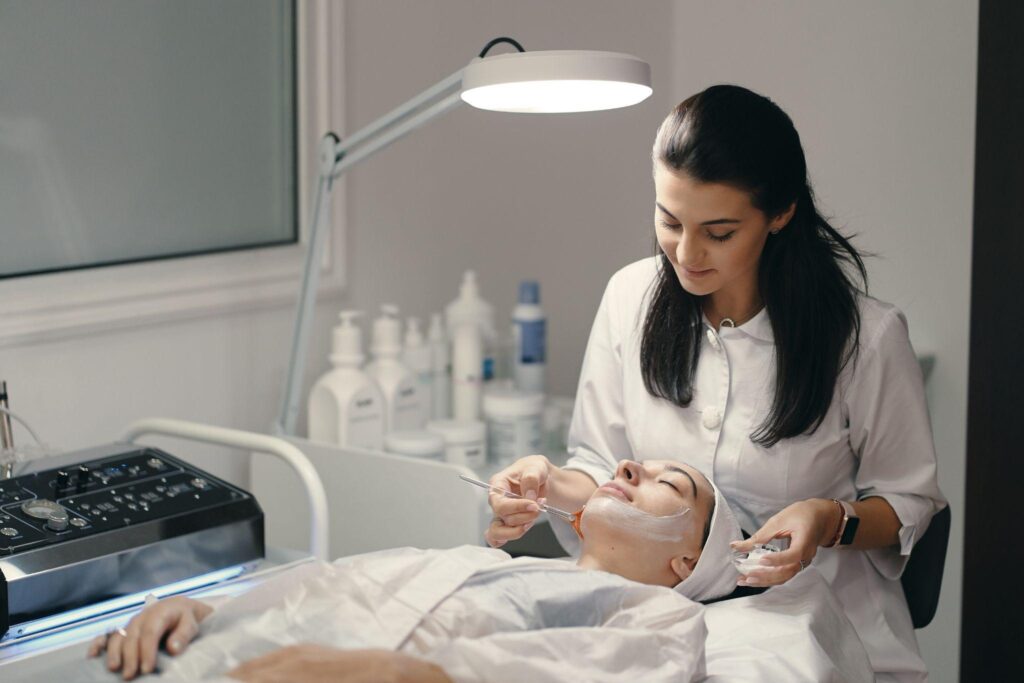
Are you tired of seeing sun spots or fine lines on your skin? Do you want to get a permanent solution? If so, it’s time to consider chemical peels. This is a popular non-invasive cosmetic procedure that every best skin doctor recommends to improve your complexion in a safe and effective manner. You’ve also heard friends rave about the results they’ve achieved through chemical peels.
In this blog post, we’ll break down everything you need to know about chemical peels. By the end, you’ll have a clear understanding of this in-office treatment and feel confident consulting with your nearby skin specialistabout whether a chemical peel is right for you. Read out to know.
How Do Chemical Peels Work?
Many dermatologists recommend using chemical peel to remove dark and aged spots and enhance acne scars or uneven skin tone.
All chemical peels work by applying a chemical solution to the skin that causes it to exfoliate and regrow. The chemical solutions used for peels contain acids like alpha hydroxy acids (AHAs), beta hydroxy acids (BHAs), trichloroacetic acid (TCA), or phenol that dissolve the glue-like substances that bind skin cells together. This caused the upper layers of the skin to detach, stimulating new cell growth and collagen production
The three main levels of chemical peels are:
- Superficial peels – In these peels, mild acids like glycolic or lactic acid are used to treat mild skin concerns like dullness, fine lines, and hyperpigmentation. The results of these peels are seen quickly but don’t last as long.
- Medium-depth peels – These peels go a little deeper using stronger acids like salicylic, Jessner’s solution (a combo of lactic, salicylic, and resorcinol acids), or trichloroacetic acid (TCA). Used to treat deeper wrinkles, scarring, and pigmentation issues. Results last longer.
- Deep peels – These peels employ strong acids like phenol or trichloroacetic acid at high concentrations to treat severe photo-damage, deep scarring, and skin laxity. It takes several weeks to heal, but the results are dramatic and long-lasting. Deeper peels must be performed by certified chemical peel dermatologistsor plastic surgeons due to increased risks.
The strength of the acid determines the depth and level of the peel. In general, superficial peels treat skin concerns on the surface, while medium and deep peels stimulate collagen production down to the mid or deep dermis for more noticeable lift and tightening.
Pre-Peel Consultation with Your Chemical Peel Dermatologist
Prior to any chemical peel procedure, your chemical peel dermatologist will thoroughly examine your skin and medical history to determine the appropriate strength peel and expectations. They will also discuss potential side effects and post-treatment care instructions. Be prepared to discuss:
- Overall skin condition and goals
- Any allergies, medical issues, or medications
- History of acne, burns, or keloid scarring
- Likelihood and tolerance of side effects or scarring
- Downtime needed for healing and returning to normal activities
They may also do a patch test on your skin first to check for sensitivity and reactions before proceeding. The consultation ensures the peel and recovery plan is customised for your individual skin needs.
What to Expect During the Chemical Peel Treatment?
On the day of treatment, your nearest dermatologist to you will cleanse and sterilise the treatment area. They will then precisely apply the chemical peel solution specified for your skin. You may feel mild stinging or burning as it works.

Depending on the depth, the procedure itself only takes 15-45 minutes. For superficial peels, the acid is neutralised after a few minutes and protective creams are applied before you leave. With medium or deep peels, the acid works longer, and you’ll remain for monitoring until the solution is fully neutralised. Immediate results aren’t seen as the full effects take 2-4 weeks to develop, but redness or flaking may start right away.
What Results Can I Expect?
Results of chemical peels continue developing over a few weeks, but typical improvements seen include:
- Smoother, brighter, more even skin tone and texture
- Firmer, lifted appearance as collagen production stimulates
- Faded acne scars, wrinkles, fine lines and hyperpigmentation
- Small pore size, reduced appearances of blemishes
- Cleared congestion or breakouts for some
Most patients see noticeable changes after 1-2 peels, but a series may be recommended for best outcomes, with touch-ups every 6-12 months as needed. Deeper peels can reduce the signs of photoaging dramatically for a more youthful complexion. However, results do gradually diminish over time as the skin naturally ages. Ongoing sun protection, exfoliation and hydration help prolong benefits.
Potential Side Effects & Downtime
Side effects and recovery time depend on the depth of the peel but may include:
- Redness, swelling, flaking or scaling of the skin
- Mild burning, stinging or tightness during and briefly after
- Temporary change in skin pigmentation or colour
- Crusting or scabbing with medium-deep peels
- Risk of infection if skin is not properly cared for
With proper aftercare, side effects only last 3-7 days with superficial peels but may take 1-2 weeks to fully heal from deeper ones. Patients typically experience more pronounced side effects like blistering, oozing or longer crusting, requiring dressings for medium and deep peels. Downtime from normal activities like workouts or sunny exposure can range from 3-10 days.
To minimise discomfort, your chemical peel dermatologist may provide pre-treatment soothing creams or pain relievers. Avoid sun exposure, harsh face washes, scrubs, or activities not approved for use until healed. Stick to gentle cleansing and plenty of moisturiser and sunscreen once scabs or flakes have lifted.
Find the Right Dermatologist near You
If you’ve decided a chemical peel is right for your skin goals, the next step is consulting a board-certified dermatologist. Get in touch with Meta Dermatology. We offer a full range of medical, cosmetic, and surgical dermatology services, including professional-strength chemical peels.
As a trusted practice serving the local community, our team takes a compassionate, individualised approach and stays up-to-date on the latest non-invasive procedures like microneedling, lasers, injectables, and more. Simply call or book online today for a chemical peel dermatologist to get started on achieving brighter, younger-looking skin!
Frequently Asked Questions
Q. How soon after the peel can I wear makeup?
A. Avoid makeup for 48 hours after a superficial peel. With a medium peel, wait 5-7 days and 10+ days with a deep peel, until all scabbing and peeling has resolved.
Q. Is chemical peel safe during pregnancy?
A. No, it is not recommended to undergo any cosmetic procedures during pregnancy or breastfeeding. Consult with your ob-gyn for a non-invasive alternative.
Q. Are the results permanent?
A. The new, healthier skin cells produced by a peel will slowly be replaced over months. Regular exfoliation and protective skin care helps maintain results for 1-2 years before additional peels are needed to continue benefits long term.
